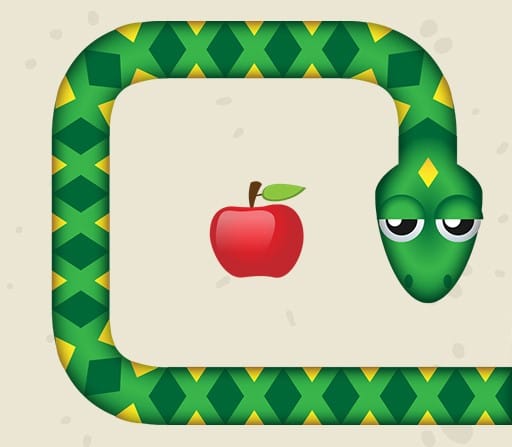Just hearing the name of the Snake game usually brings back memories for many of us. Whether you played it on an old Nokia phone, a video game, or a computer, almost everyone has slid that little line around a screen by trying to eat dots without crashing.

It seems so simple, nearly too simple, yet it became one of the most beloved and challenging video games of all time. How did something so basic become a true classic? Let us check out below.
The Beauty of Simplicity
Snake is totally simple to play. You run a growing snake right on a grid. Your goal is to eat dots that appear randomly. Every time you eat a dot, your snake gets longer.
But the thing is, you cannot hit the walls of the playing area, and you also cannot crash into your own body. If you do, it’s game over.
This simplicity is its greatest strength. There are no complicated controls to learn, no long stories to follow, and no complex menus to navigate.
You can simply pick up and play. This means anyone, regardless of age or gaming experience, can understand the rules in seconds and start having fun.
In a world increasingly filled with complex games that require hours to master, Snake’s instant accessibility is a breath of fresh air.
The Addictive High-Score Chase
Apart from its simple rules, Snake is quite addictive with no doubt. Every game is a fresh try to beat your last high score.
The game becomes harder and harder as your snake gets longer. The amount of space you have to move shrinks which makes it challenging for all the players.
That feeling of protecting from a crash or smartly moving your long snake through a tight gap is very satisfying.
And then, when you finally hit your own tail or a wall, there is always that thought: Just one more try. I know I can do better.
This “just one more game” loop is a powerful psychological trick that keeps players engaged for hours. It is a pure test of skill and the reward is the satisfaction of seeing your score go higher and higher.
Unbeatable Accessibility
Snake’s journey to classic status is also deeply connected to its accessibility across different technologies and eras.
Early Days:
The concept of Snake game goes way back to the late 1970s with arcade games like Blockade. These early versions proved that the concept was entertaining but they were restricted to arcades.
The PC Era:
As personal computers became quite common in the 1980s and 90s, basic versions of Snake started appearing on them.
It was a perfect fit for early computers as it did not need much processing power or attractive graphics. You can even find it programmed into graphing calculators which make it a favorite pastime.
The Nokia Revolution:
The true explosion of Snake’s popularity came with Nokia mobile phones especially the iconic Nokia 3310 released in 2000.
In the previous era, mobile phones were mainly designed for sending texts and attending calls. Games were not available much. Nokia made Snake II an in-built feature on many of its phones.
It means millions of people around the world suddenly had a fun, free and instantly playable game right in their pocket.
Assume that you are on a long bus ride, waiting for an appointment, or simply bored at home. There was no internet on your phone and no app store.
But you had Snake. It was the perfect time killer and it introduced millions of people who did not consider themselves gamers to the joy of video games.
A Timeless Entertainment
In this age of stunning 3D graphics and complex online multiplayer games, the main idea of Snake game stays relevant.
You can find different versions of Snake games on app stores, websites and even smart TVs. Modern versions might have power ups, different game modes, or competitive multiplayer modes.
But basically, they are all simple and have addictive loops of eating, growing, and avoiding crashes. Snake teaches us that a game does not need to be attractive or complicated to be exciting.
This game reminds all people that sometimes the simplest ideas are the most powerful ones.